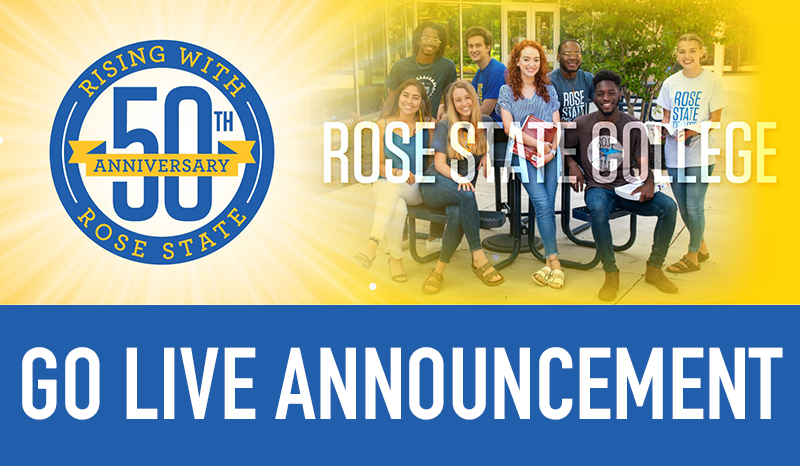The 3 Commandments of Admissions Engagement
In our prior blog entry, we mapped out the journey that candidates follow from an unknown person to a student. We also described that inbound marketing focuses on optimizing each of the transition points so that more people successfully navigate that journey.
This article will now discuss how to engage the candidate, which is the mechanism by which you move a candidate from one stage to the next in the admissions journey.
Optimizing Engagement in a Nutshell
When we talk about optimizing engagement, what we mean is interacting with a candidate in a manner where he/she responds: either by continuing the admissions journey or raising concerns or objectives. To do this, an organization needs excel at all 3 of the following things together. Every time.
Provide the Right Information at the Right Time via the Right Channel
The Right Information
The first piece of the equation is providing the right information to help the candidate move to the next step. At each stage of the admissions process, that information can be different based on the stage, the candidate’s background, and the candidate’s goals.
Also, because the candidate may not always be aware what he/she needs to move along the admissions journey, institutions may need to help him/her determine what they need. Here are some common questions to which candidates may need answers:
- Did I successfully complete my last task?
- What are the next steps?
- What deadlines are there?
- I am stuck. How do I address it?
- I’m not sure what degree program to choose
- I’m not sure whether I’ll be successful when I enroll
- I’m not sure whether I can afford tuition
- What supporting documentation do I need to provide?
- What is my status? Have I been admitted?
- Is your school going to better for me than [X] school?
The Right Time
You may be familiar with the colloquial "strike while the iron's hot". There is nothing more apt than this when considering response times in inbound marketing. When shopping online, how often are you interested in something, have a question, and move on when that question isn't answered in a rapid enough manner. Candidate engagement works the same way.
Engaging at the right time involves the following:
- Proactively determining whether a candidate needs something
- Responding in a timely manner to inquiries
- Proactively providing status updates as the candidate moves through the admissions funnel
The Right Time: Determine whether a candidate needs something
When determining whether a candidate needs something, it is important to identify milestones in the admissions journey and track timeframes where a candidate should progress to the next milestone. Whenever a candidate doesn't move forward, this should trigger a communication. Here are some examples:
- A candidate does a user registration, but doesn't begin an application within 2-4 hours.
- A candidate completes part of an application, but doesn't come back to work on it for 24 hours.
- A candidate completes most of the application, but doesn't provide a key response for 24 hours:
- Degree and Program
- High School Information
- Transfer College Information
- A candidate completes all of an application, but doesn't submit it
The Right Time: Respond to Inquiries
When responding to Inquiries, the ball has been lobbed into your court. The candidate is actively engaging with you, and it is critical to respond as quickly as possible (preferably within an hour).
Engagement is like trying to move a really big rock. It takes a lot of energy to initially get it moving. Once it's moving, it's easier to keep it moving. However, if you let it stop, you have to apply all that energy to get it moving again.
In general, it takes 7 attempts to engage with somebody to be successful. However, if the candidate is engaging with you, a timely response reduces that to 1-2 attempts.
The Right Time: Proactively Provide Status and Next Steps
Finally, many of the questions listed above fall under that category of "what is the status and what should I expect next". As candidates complete each step of the admissions journey, they will almost always need confirmation of their status, and instructions as to what to do next. This can be triggered via an automated process -- but will often need to be supplemented with reminders to ensure that those steps remain top of mind.
The Right Channel
Finally, a critical aspect of reaching / engaging with candidates is to use the communications channels that are most effective for them. In higher education, this is often the most challenging aspect of engaging with candidates and students.
I can't count the number of times I've been told by admissions staff that they have a problem reaching candidates because they never read their email (let alone engaging them through physical mail). However, some channels need to be utilized judiciously. For example, it is generally inappropriate to send an unsolicited text to a candidate from a personal phone number.
Therefore, a hybrid approach is necessary that incorporates services that are identifiable as the institution. Here are a few examples of certain channels and when appropriate
Channel: Email Messages
In a commercial environment, almost all inbound marketing engagement is done via email. However, in higher education email is probably one of the least effective ways of engaging with candidates.
That said, due to limitations in how candidates can respond via texting and the amount of information that can be communicated in a text message, email still plays a role. Supplementing texting with email is often a good technique (the text notifies the candidate to check email and what the email is about, which makes it more likely the candidate will check email).
Channel: Text Messages
This is often the most effective means of notifying a candidate. Often, it can't engage the candidate completely and often requires links to allow the candidate to engage back. However, in some circumstances, chat functionality can be used with send/response.
- Confirm actions taken by the candidate. Often with a link to help take next step.
- Proactively ask candidate if need something or provide information.
- Provide status updates as well as due dates.
Channel: Calling via the Telephone
Picking up the phone and calling is very effective for engaging a candidate with very specific issues. Because you can leave a voice message, you often will get a response. However, it is most effective for the following types of conversations:
- There is something wrong with your [X]
- I noticed you haven't completed [X]. Can I help?
- You are part of a focus group (military, under-represented group, elite student), I'd like to talk with you about [X]
Summary
Now that we've covered the basics on engaging with candidates: providing the right information at the right time via the right form factor; we can delve into techniques for engaging at each stage of the funnel as well as how this could affect roles and responsibilities at an institution.
Our next article will dive into each stage of the admissions journey and how to apply the inbound process. Stay tuned.


